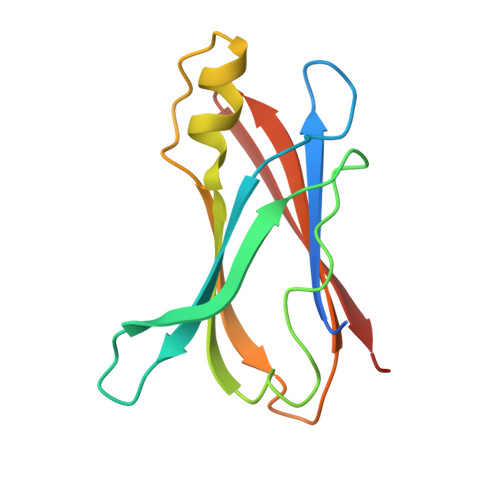Structure of Human Transthyretin Complexed with Bromophenols : A New Mode of Binding
Ghosh, M., Meerts, I.A.T.M., Cook, A., Bergman, A., Brouwer, A., Johnson, L.N.(2000) Acta Crystallogr D Biol Crystallogr 56: 1085
- PubMed: 10957627
- DOI: https://doi.org/10.1107/s0907444900008568
- Primary Citation of Related Structures:
1E3F, 1E4H, 1E5A - PubMed Abstract:
The binding of two organohalogen substances, pentabromophenol (PBP) and 2,4,6-tribromophenol (TBP), to human transthyretin (TTR), a thyroid hormone transport protein, has been studied by in vitro competitive binding assays and by X-ray crystallography. Both compounds bind to TTR with high affinity, in competition with the natural ligand thyroxine (T(4)). The crystal structures of the TTR-PBP and TTR-TBP complexes show some unusual binding patterns for the ligands. They bind exclusively in the 'reversed' mode, with their hydroxyl group pointing towards the mouth of the binding channel and in planes approximately perpendicular to that adopted by the T(4) phenolic ring in a TTR-T(4) complex, a feature not observed before. The hydroxyl group in the ligands, which was previously thought to be a key ingredient for a strong binding to TTR, does not seem to play an important role in the binding of these compounds to TTR. In the TTR-PBP complex, it is primarily the halogens which interact with the TTR molecule and therefore must account for the strong affinity of binding. The interactions with the halogens are smaller in number in TTR-TBP and there is a decrease in affinity, even though the interaction with the hydroxyl group is stronger than that in the TTR-PBP complex.
Organizational Affiliation:
Laboratory of Molecular Biophysics, Department of Biochemistry, South Parks Road, Oxford OX1 3QU, England. mina@biop.ox.ac.uk















